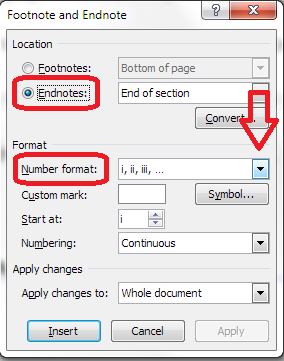

- CONVERT ENDNOTES TO FOOTNOTES WORD 2016 WINDOWS HOW TO
- CONVERT ENDNOTES TO FOOTNOTES WORD 2016 WINDOWS MANUAL
- CONVERT ENDNOTES TO FOOTNOTES WORD 2016 WINDOWS WINDOWS
CONVERT ENDNOTES TO FOOTNOTES WORD 2016 WINDOWS MANUAL
The product will do lots more than just converting from manual to automatic notes. Notice that you can try out the product for 45 days, after which time you'll need to pay a nominal fee for it. One such program is called NoteStripper, available from the good folks at Editorium. One possible solution is to use a third-party program that does the conversion for you. If you have lots and lots of endnotes in a document, this can get very tiring very fast. Instead, you need to choose each endnote from the end of the document, copy it to the Clipboard, locate the endnote marker in the text, delete it, insert one of Word's endnotes (Insert | Footnote or Insert | Reference | Footnote, depending on your version of Word), and then paste the endnote text into the actual endnote. Word does not provide a way to convert from manual notes to its automatic system. This makes it impossible to add or delete endnotes and have them automatically renumbered, as they would be if Word's note system was used. The endnote markers are simply superscripted text, and the endnotes themselves are typed at the end of the document. The problem is that the endnotes are manually added-they are not inserted using Word's automatic note system. William works with files that he receives from other people, and sometimes those documents include endnotes.
CONVERT ENDNOTES TO FOOTNOTES WORD 2016 WINDOWS HOW TO
To further improve your productivity in Microsoft Word, read our guides on how to insert a tick or a cross symbol in Microsoft Word and Excel and how to start page numbering from a specific page in Microsoft Word. Text formatting options are available through the Styles tool, while structural settings, including footnote location and numbering, are available in References. Inserting a new footnote shouldn’t take more than a few seconds whether you’re using the References tab or a keyboard shortcut. Summaryįootnotes in Microsoft Word come in handy if you’re looking for a structured and efficient way to organize references in your document. In the References tab, under Footnotes, you can use the Next footnote and Previous footnote commands to navigate through the footnotes in your document-a useful shortcut if you’re proofreading, for instance.Īlso, if your cursor is placed on a text that’s referenced with a footnote, the Show footnote command will take you straight to the footnote text, which could help save time in reference-heavy documents. (Image credit: Microsoft) Step 7 (optional): Navigate through footnotes You can modify footnote columns and numbering options in Word. Click OK to apply your changes to all past and subsequent footnote references or texts in the document. Here, you can change the font, font size, and other format settings. To edit either of these elements, click on the arrow next to it on the Styles list and select Modify. The footnote reference is the number or symbol appearing in your main text, whereas the footnote text is the content usually placed at the bottom of the page. Footnote Reference and Footnote Text should now be visible in the Styles list.


Under Select how list is sorted, choose Alphabetical. Under Select styles to show, choose All styles. It is a bit of a hassle to be having to go up to the Program information. If you don’t see Footnotes listed, click the Options button at the bottom. Endnote shortcut in Word is Ctrl+Alt+D and Footnote shortcut is Ctrl+Alt+ Endnotes and Footnotes are similar concepts. Click the Home tab, then click the downward arrow in the Styles section to open a list of style elements. Leave a space after your text, then go to Insert, and click on Cross. To format all footnotes in a document, you need to use Styles. Cross-referencing footnotes in Word Enter the text to preface your cross-reference. A format ribbon will appear with options to change the font, text color, paragraph spacing, and more. To format one or more footnotes on a page, select the footnote text. Once you’ve written your footnote, you can edit it at any time by clicking on it. This is a great advantage of the footnotes tool versus manually creating references in the footer.

Word also takes care of the footnotes’ numerical progression as you add more to your document. By default, it matches the superscript number or symbol in the text with the one next to the footnote. When you insert a footnote, Word automatically takes you to the bottom of the page to write it. Repeat Step 1 before clicking Insert Footnote.
CONVERT ENDNOTES TO FOOTNOTES WORD 2016 WINDOWS WINDOWS
However, if it’s been lost, simply undo the insertion of the footnote by clicking Undo in the Home tab or by pressing Ctrl+Z on a Windows PC. The placement of the footnote should be retained from Step 1. In the Footnotes section, click the Insert Footnote button. Your References ribbon is divided into sections including Table of Contents, Footnotes, and others. (Image credit: Microsoft) Step 3: Click Insert Footnote In the References tab, you can insert and modify options for footnotes.


 0 kommentar(er)
0 kommentar(er)
